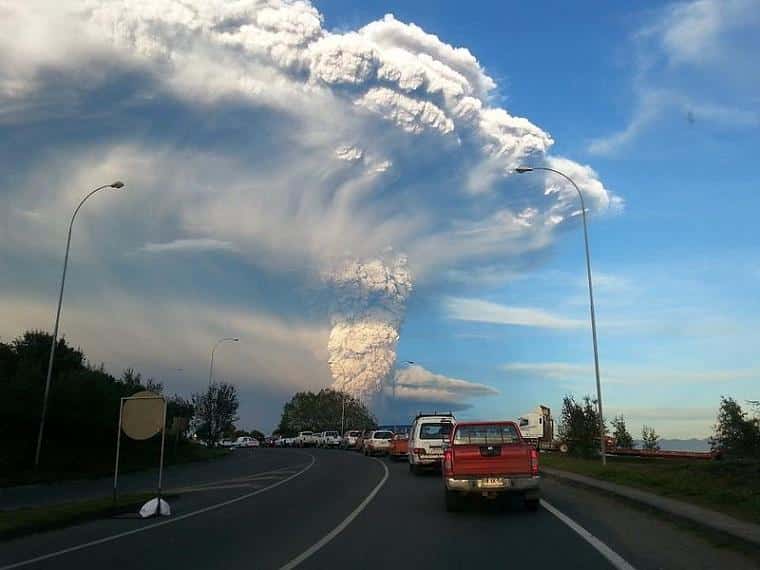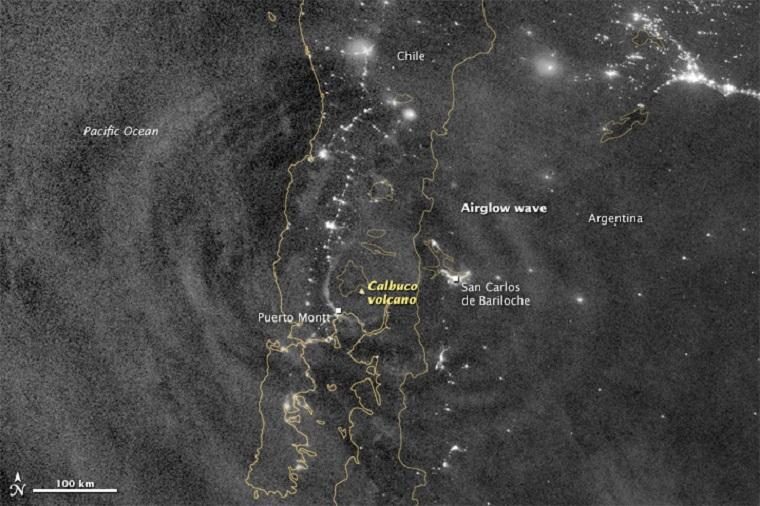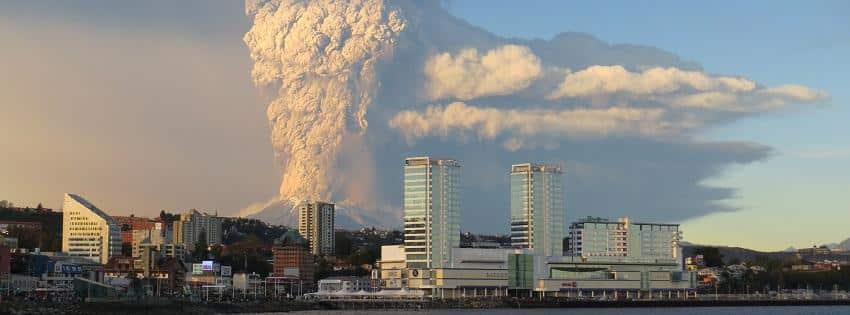Can a volcano ruin your vacation? Maybe, at least if you’re going to Chile. The territory of our neighbors has one of the largest numbers of active volcanoes in the world – there are 95, according to data from the BBC.
As a result, a dormant volcano turns and moves and decides to wake up, throwing tons and tons of ash and volcanic matter into the atmosphere. As the world has already learned a little about volcanoes since the tragedy of Vesuvius, most of the time the awakening of a volcano ends up being a minor problem, as long as by “minor” you mean: no deaths and destruction of entire cities. On the other hand, the wind can give a lot of people a headache.
Like this? The wind can carry the volcano’s ash to other places, affecting areas up to thousands of kilometers away. A large city, Santiago, for example, sees air pollution worsen in cases like this.
The ashes, which do not respect borders, can even reach other countries, affecting the lives of neighbors. In the case of Chile, it is said and done: every time a volcano awakens in the south of the country, Argentina, on the other side of the Andes, also needs to deal with the problem.
In addition to the presence of ash in cities and increased pollution, volcanic activity often interrupts air traffic. The ash from volcanoes can damage airplane engines, which would be a risk to aviation. This is the most common way that a volcano can disrupt your vacation – causing hundreds of flights to be canceled, even to cities that are very far from the volcano.
Who doesn’t remember the eruptions of Eyjafjallajökull, a volcano with a, err, nice name, located in Iceland? In 2011, thousands of flights were canceled because of it, almost completely closing European airspace, which caused a ripple effect across the world.
Important tip: Don’t make the mistake of traveling to Chile without travel insurance.
Understand the reason and find out how to get discounted insurance
Photo: Andiseño Estudio, Public Domain
What volcanoes in Chile are awake?
This year there have been two (so far): Calbuco and Villarrica, which erupted in March. Both are in the south of Chile, about a thousand kilometers from Santiago. Both are in a tourist area, Chilean Patagonia.
The Chilean cities of Púcon, Puerto Varas and Puerto Montt, destinations that attract many travelers, are on the volcano route. Bariloche, in Argentina, is about 100 km from this region, so the city is often affected by Chilean volcanoes.
Villarrica is one of the most active volcanoes in South America. Calbuco had been dormant for half a century, so its awakening at the end of April caused a greater scare. There were three strong eruptions in one week, which caused the Chilean government to decree a 20 km exclusion area around the volcano.

Calbuco eruption seen from Puerto Varas (Photo: Hochgeladen von Aeveraal)
How long should Calbuco’s activity last?
Complicated to answer. Experts have already reported that the intensity of Calbuco’s activity has decreased, which is great. On the other hand, Chile’s National Mining and Geology Service warns that Calbuco should remain awake for several months. And new eruptions are not ruled out.
Should I travel to Chile despite the volcano erupting?
Let’s not forget that Chile is a big country, the size of France and Germany combined. Santiago, for example, is almost a thousand kilometers away from Calbuco. The worst that can happen is that the ash from the volcano reaches there. As the ash is non-toxic, the biggest problem, as already said, is for aviation.
When Calbuco woke up, several companies, such as Delta, Air France and American Airlines, canceled or changed flights. In general, South American companies continued to operate.
It is also worth mentioning that so far the ashes’ route has been in another direction: they are heading towards Argentina. After passing through Bariloche, which had its airport closed for a few days, the ash arrived in Buenos Aires, causing the cancellation of a few more flights. And then they went to Brazil, in Rio Grande do Sul, and to Uruguay, finally entering the Atlantic Ocean.
Travel to Chile that is not recommended (at the moment) is to the volcano region, Púcon, Puerto Varas, Puerto Montt and this part of southern Chile. And, mind you, not because of the ash, which went elsewhere, but because of the risk of other eruptions, which has not yet been ruled out.
And for Argentina?
The same thing applies. Don’t be afraid to go to Buenos Aires, Mendoza or other parts of the country. The only tourist city affected so far has been Bariloche, but the airport has already reopened. However, the city received a large amount of ash, which caused road closures and prevented many tours in the region.
As Bariloche is close to the volcanoes, it is best to wait for news until you book a trip there, after all, other eruptions may occur.

What do I do?
Read everything you can on the subject. Brazilians don’t usually know how to deal with volcanoes, earthquakes, tsunamis and other actions on the planet. For this reason, it is essential to know what is happening before embarking on a trip to these regions.
Keep an eye on news portals. It is also worth following the National Geology and Mining Service of Chile on Twitterin addition to occasionally visiting their website – there you can follow the daily life of Chilean volcanoes.
Featured image: Photo: Carolina Barría Kemp, Creative Commons
Sign up for our newsletter

Sign up for our newsletter and stay up to date with exclusive news
that can transform your routine!
Warning: Undefined array key "title" in /home/storelat/public_html/wp-content/plugins/link-whisper-premium/templates/frontend/related-posts.php on line 12
Warning: Undefined array key "title_tag" in /home/storelat/public_html/wp-content/plugins/link-whisper-premium/templates/frontend/related-posts.php on line 13




